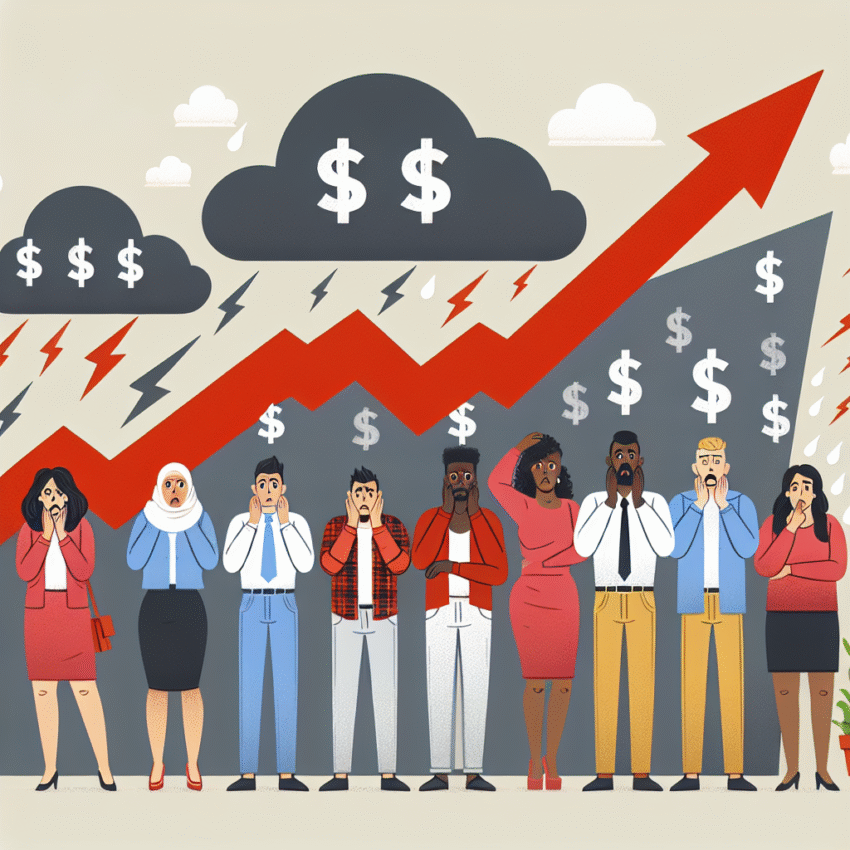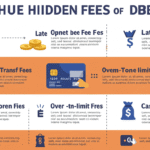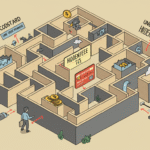Understanding the Economic Landscape: The Rise of Americans Without Emergency Savings
The current economic climate reveals a worrying trend: an increasing number of Americans find themselves without emergency savings. As inflation continues to rise and job security fluctuates, many families are facing unprecedented financial pressures. This phenomenon, exacerbated by global events, impacts not only individuals but also the broader economy.
The Current State of Emergency Savings
Recent surveys indicate that a staggering 63% of Americans live paycheck to paycheck, which leaves little room for savings. In prior years, families were encouraged to save at least three to six months’ worth of living expenses for emergencies. However, for many, this ideal remains just that—a distant goal overshadowed by pressing financial obligations. The percentage of Americans without emergency savings has soared dramatically in the past two years, driven by a combination of rising living costs and stagnating wages.
Factors Contributing to Savings Deficiencies
Several key factors have contributed to the increase in Americans lacking emergency savings:
-
Inflationary Pressures: Inflation rates hit a 40-year high in 2022, affecting everyday expenses including food, housing, and healthcare. As prices soar, discretionary income diminishes, making it challenging for families to set aside money.
-
Rising Costs of Living: Affordability of basic necessities has diminished. Rental prices in urban areas have skyrocketed, leading many to prioritize immediate housing costs over savings.
-
Job Insecurity: The volatile job market, coupled with layoffs in various sectors, has created a climate of fear. Workers are reluctant to allocate funds toward savings when job security feels precarious.
-
Unexpected Expenses: Medical bills, car repairs, and other unforeseen expenses can easily deroute any savings plan. Many families are forced to dip into what little savings they may have, perpetuating the cycle of financial instability.
- Changing Attitudes Toward Money: Growing consumerism and the normalization of living on credit have led many to prioritize current consumption over future savings. The impact of social media influences often encourages lifestyles that are not sustainable for most families.
The Demographics of Financial Insecurity
Statistical analysis shows that certain demographic groups are disproportionately affected by the lack of emergency savings. Low-income households, single-parent families, and individuals under 35 are particularly susceptible:
-
Low-Income Households: Many families work multiple jobs just to meet their basic needs, leaving them with no surplus income to save. This creates a cycle where lack of savings leads to reliance on credit, resulting in further debt.
-
Ethnic Minorities: Research indicates that Hispanic and Black households experience higher rates of financial insecurity compared to their White counterparts. Systematic barriers often limit their access to higher-paying jobs and financial literacy resources.
- Young Adults (Ages 25-34): Younger generations grapple with student loan debt and rising living costs, which detracts from their ability to build savings. Many are still recovering from the financial impact of the COVID-19 pandemic.
Consequences of Lacking Emergency Savings
The implications of not having emergency savings stretch far beyond individual households; they can ripple through the economy:
-
Increased Financial Stress: Living without a safety net leads to significant stress and anxiety, impacting mental health. This emotional toll can affect job performance and contribute to a cycle of poverty.
-
Dependence on Credit: Many Americans resort to credit cards or loans to cover emergencies, leading to further financial strain. High interest rates can turn minor setbacks into long-lasting financial crises.
- Economic Instability: A population lacking adequate emergency savings can hinder economic recovery. When consumer spending is constrained, businesses face lower sales, which can, in turn, exacerbate unemployment rates.
Strategies to Build Emergency Savings
Despite the overwhelming challenges, there are practical strategies that individuals and families can adopt to improve their financial standing:
-
Automate Savings: Setting up automatic transfers to a savings account can help create a “pay yourself first” mentality, making it easier to build a financial cushion.
-
Set Realistic Goals: Establishing small, attainable savings goals can help individuals get started. Even saving $10 a week can accumulate meaningful funds over time.
-
Cut Unnecessary Expenses: Conducting a monthly budget review can reveal areas where spending can be trimmed. Savings generated from these adjustments can then be redirected into an emergency fund.
-
Utilize Financial Resources: Many nonprofit organizations offer workshops on budgeting and financial literacy. Utilizing such resources can equip individuals with the tools they need to save effectively.
- Engage in Gig Economy Work: For those with flexible schedules, gig opportunities can provide additional income. This influx can be immediately allocated to savings.
The Role of Government Programs and Policies
Government initiatives can also play a crucial role in addressing the savings crisis:
-
Financial Education Programs: Implementing comprehensive financial literacy programs in schools can help cultivate responsible money management skills from a young age.
-
Support for Low-Income Families: Increased access to financial aid, food stamps, and housing assistance can alleviate some of the immediate pressures that prevent savings.
- Tax Incentives: Tax breaks or incentives for savings accounts can encourage families to cultivate emergency funds.
Conclusion: The Importance of Building Financial Resilience
The trend of Americans lacking emergency savings is a multifaceted issue that requires collective action. By understanding the underlying factors and implementing effective strategies, individuals, communities, and policymakers can work together to build a more stable and financially resilient population. Supporting emergency saving practices not only empowers families but also fortifies the economic foundation of the nation.




